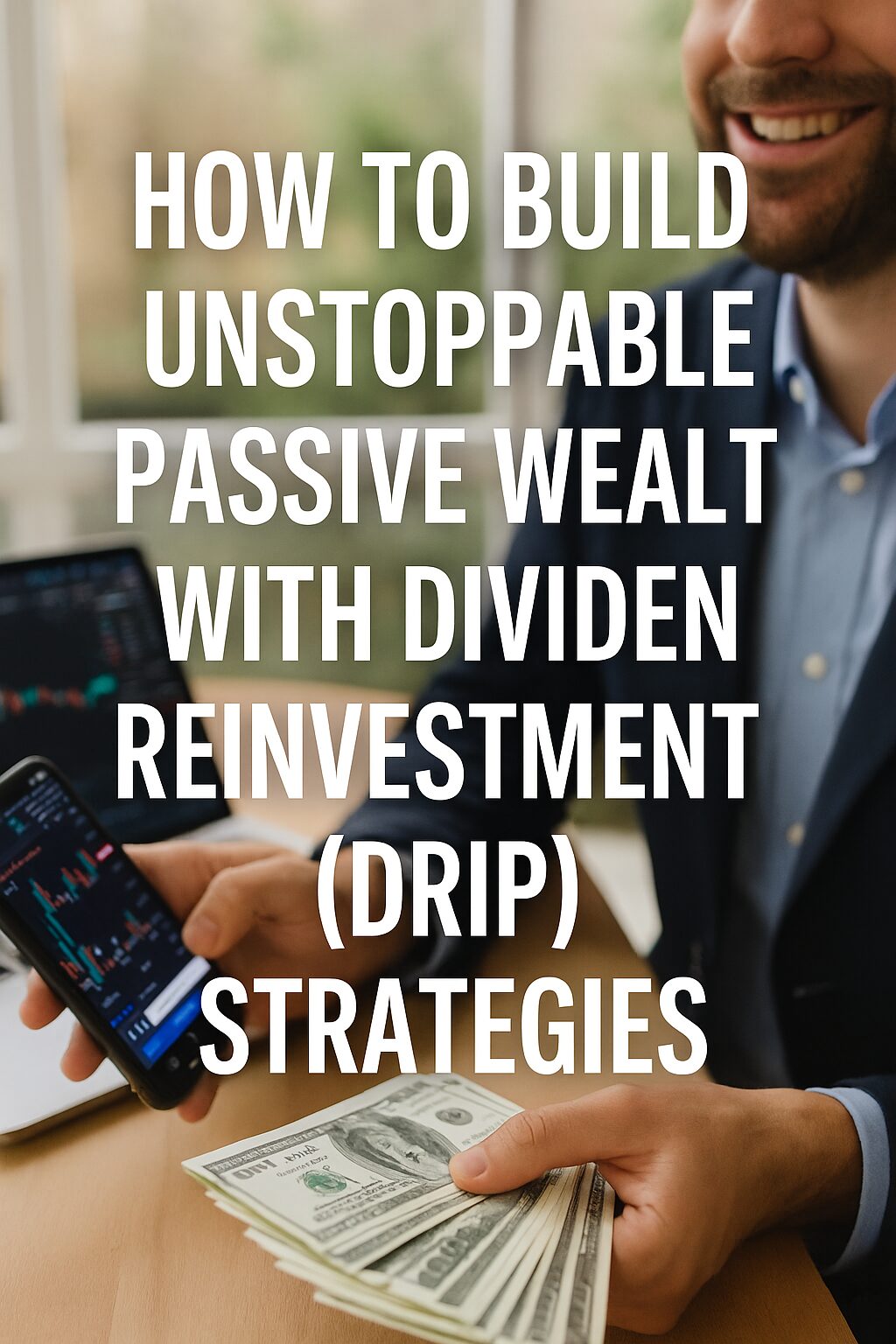For most investors chasing long-term financial freedom, the secret weapon isn’t a fancy stock or a crypto moonshot. It’s the quiet, consistent compounding power of dividend reinvestment. With a disciplined DRIP (Dividend Reinvestment Plan) strategy, even modest income streams can evolve into powerful engines of passive wealth.
In this guide, we’ll break down how DRIP works, why it outperforms manual reinvestment, and how to use it to build unstoppable long-term income—without injecting more capital.
What Is a DRIP Strategy?
A Dividend Reinvestment Plan (DRIP) allows you to automatically reinvest your cash dividends into additional shares of the same stock or ETF, often commission-free. Instead of receiving a payout into your brokerage account, your money immediately buys more units of the income-generating asset—compounding your growth without you lifting a finger.
The best part? Many brokers allow you to activate DRIP in just one click, and from there, your portfolio evolves autonomously.
Why DRIP Is So Powerful
The power of DRIP comes from automatic compounding. You’re not just earning dividends—you’re earning dividends on your reinvested dividends. Over time, this snowballs into significant income and asset growth. Here’s why it beats traditional cash-out approaches:
- Zero Emotional Decisions: No market timing or buy/sell panic—your investment grows steadily.
- Frictionless Growth: Most brokers offer DRIP with no transaction fees or taxes until you sell.
- Maximized Compounding: Even small reinvestments multiply over decades.
- Discipline without Effort: DRIP forces a savings habit without extra decision-making.
DRIP is like planting a tree and letting it grow uninterrupted—except this tree grows money.
Real Example: $10,000 Turned Into $125,000
If you had invested $10,000 in Johnson & Johnson (JNJ) 25 years ago with DRIP enabled, your total value today could exceed $125,000—even without adding any more cash. The growth comes from both price appreciation and the relentless compounding of reinvested dividends.
And JNJ is just one example. Long-term investors who applied DRIP to companies like Procter & Gamble, Coca-Cola, or ETFs like SCHD have seen similar exponential results—all because they trusted the process and let time work its magic.
Best Assets for DRIP Strategies
DRIP works best with reliable, dividend-paying assets. Some ideal categories include:
- Dividend Aristocrats: Blue-chip companies with 25+ years of increasing dividends.
- High-Yield ETFs: Like VYM (Vanguard High Dividend Yield) or SCHD.
- REITs: Real Estate Investment Trusts, especially monthly payers.
- Utility Stocks: Historically stable and income-focused.
Look for companies with predictable earnings, low payout ratios, and a strong dividend track record. Those are the real DRIP stars.
Where to Start: DRIP-Friendly Platforms
Not all brokers support DRIP equally. Some of the best U.S.-based platforms include:
- Fidelity: Easy DRIP activation, no fees, wide asset availability.
- Charles Schwab: DRIP for both stocks and ETFs.
- Vanguard: Especially for their own ETFs like VTI and VYM.
- SoFi & M1 Finance: Good for beginners and fractional investing.
These platforms also support tax-advantaged accounts like Roth IRAs or Traditional IRAs, helping you shield your compounding gains from Uncle Sam.
DRIP vs. Manual Reinvestment
Some investors prefer to receive dividends in cash and decide later where to reinvest. While flexible, this method often results in missed compounding opportunities:
- Manual effort → inconsistency
- Delayed reinvestment → lost growth
- Temptation to spend cash → broken strategy
DRIP removes emotion and automates growth. For long-term passive wealth, it’s almost unbeatable. In a world full of noise, simplicity often wins.
Pro Tips for Maximizing DRIP
- Use tax-advantaged accounts like Roth IRAs to avoid reinvestment taxes.
- Enable DRIP only on high-conviction long-term assets.
- Rebalance annually to maintain diversification.
- Track everything using portfolio tools like Empower, Sharesight, or Kubera.
Also, remember to review dividend history and payout ratios regularly. A company that cuts dividends can interrupt your compounding engine.
Final Thoughts
DRIP isn’t flashy, but it’s quietly powerful. By automating the reinvestment of dividends into strong, consistent assets, you’re building a machine that compounds wealth even while you sleep. The secret isn’t in doing more, it’s in doing smart things automatically—and DRIP is one of the smartest.
This strategy doesn’t require market timing, deep research, or even emotional discipline. It only requires patience—and that’s a currency most investors undervalue.
